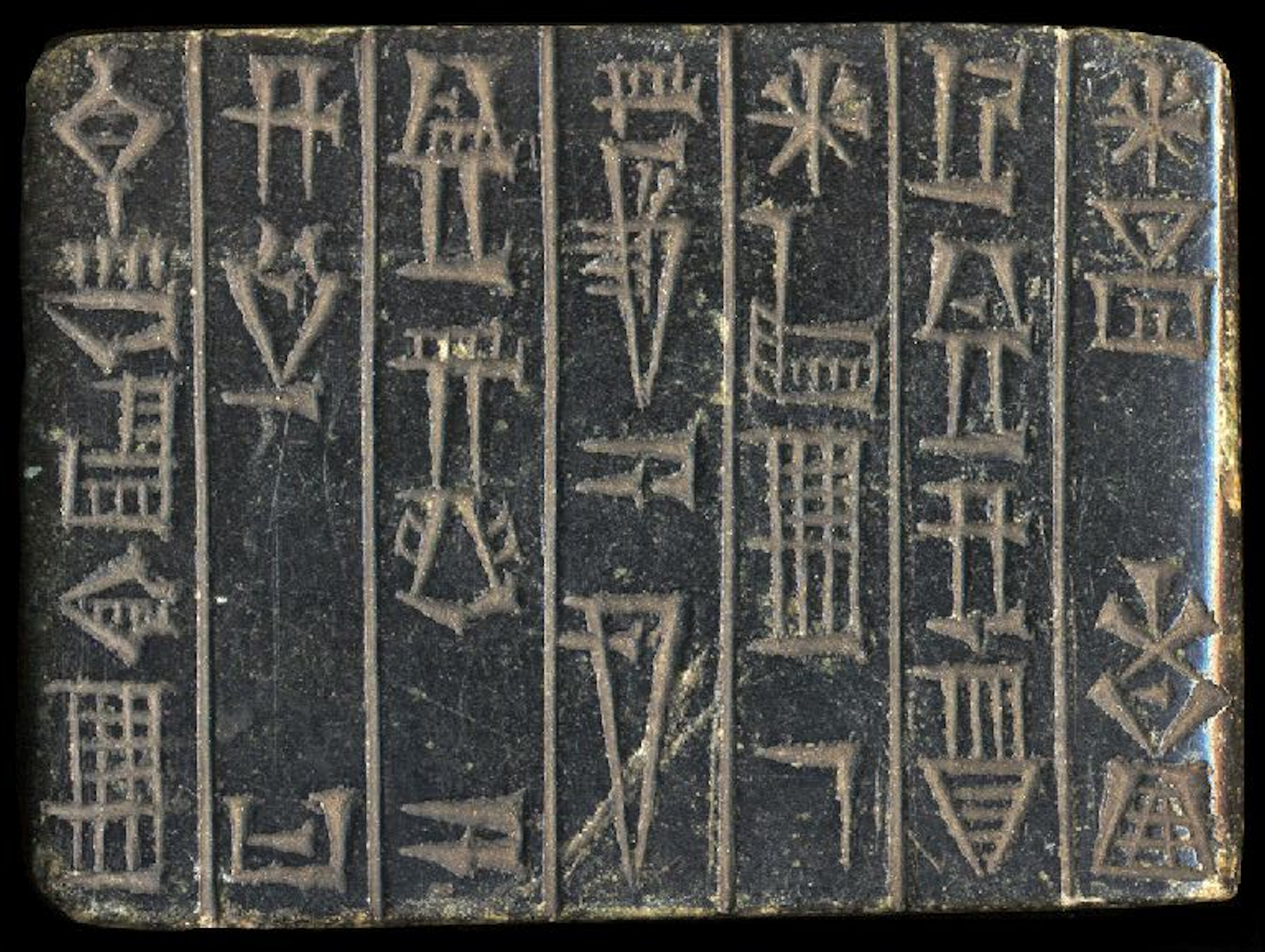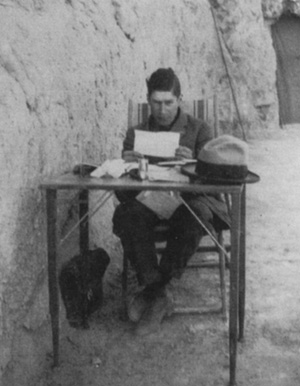|
Ningizzida
Ningishzida ( Sumerian: DNIN-G̃IŠ-ZID-DA, possible meaning "Lord f theGood Tree") was a Mesopotamian deity of vegetation, the underworld and sometimes war. He was commonly associated with snakes. Like Dumuzi, he was believed to spend a part of the year in the land of the dead. He also shared many of his functions with his father Ninazu. In myths he usually appears in an underworld setting, though in the myth of Adapa he is instead described as one of the doorkeepers of the sky god Anu. Name Thorkild Jacobsen proposed that the Sumerian name ''Ningishzida'' can be explained as "lord of the good tree." This translation is still accepted by other Assyriologists today. Various syllabic spellings are known, including '' dNi-gi-si-da'', ''dNin-nigi-si-da'', ''dNin-ki-zi-da'' and ''dNin-gi-iz-zi-da''. While " nin" can be translated as "lady" in some contexts, it was grammatically neutral in Sumerian and can be found in the names of many deities, both male (Ningishzida, Ninazu, ... [...More Info...] [...Related Items...] OR: [Wikipedia] [Google] [Baidu] |
Gudea
Gudea ( Sumerian: , ''Gu3-de2-a'') was a ruler ('' ensi'') of the state of Lagash in Southern Mesopotamia, who ruled circa 2080–2060 BC ( short chronology) or 2144-2124 BC (middle chronology). He probably did not come from the city, but had married Ninalla, daughter of the ruler Ur-Baba (2164–2144 BC) of Lagash, thus gaining entrance to the royal house of Lagash. He was succeeded by his son Ur-Ningirsu. Gudea ruled at a time when the center of Sumer was ruled by the Gutian dynasty, and when Ishtup-Ilum ruled to the north in Mari. Under Gudea, Lagash had a golden age, and seemed to enjoy a high level of independence from the Gutians. Inscriptions Gudea chose the title of ''énsi'' (town-king or governor), not the more exalted ''lugal'' (Akkadian ''šarrum''). Gudea did not style himself "god of Lagash" as he was not deified during his own lifetime, this title must have been given to him posthumously as in accordance with Mesopotamian traditions for all rulers except Naram-S ... [...More Info...] [...Related Items...] OR: [Wikipedia] [Google] [Baidu] |
Ninurta
, image= Cropped Image of Carving Showing the Mesopotamian God Ninurta.png , caption= Assyrian stone relief from the temple of Ninurta at Kalhu, showing the god with his thunderbolts pursuing Anzû, who has stolen the Tablet of Destinies from Enlil's sanctuary (Austen Henry Layard ''Monuments of Nineveh'', 2nd Series, 1853) , parents=Enlil and Ninhursag As Urash, An , deity_of=God of agriculture, hunting, and war , abode=Eshumesha temple in NippurLater Kalhu, during Assyrian times , symbol=Plow and perched bird , consort= ''As Ninurta:'' Gula''As Ninĝirsu:'' Bau , children= , planet=Saturn, Mercury , mount= Beast with the body of a lion and the tail of a scorpion , equivalent1_type = Caananite , equivalent1 = Attar , equivalent2_type = Eblaite , equivalent2 = Aštabi Ninurta ( sux, : , possible meaning "Lord fBarley"), also known as Ninĝirsu ( sux, : , meaning "Lord fGirsu"), is an ancient Mesopotamian god associated with farming, healing, hunting, law, ... [...More Info...] [...Related Items...] OR: [Wikipedia] [Google] [Baidu] |
Bau (goddess)
Bau, also read Baba (cuneiform: 𒀭𒁀𒌑 '' dBa-U2''), was a Mesopotamian goddess. The reading of her name is a subject of debate among researchers, though Bau is considered the conventional spelling today. While initially regarded simply as a life-giving deity, in some cases associated with the creation in mankind, over the course of the third and second millennia BCE she also acquired the role of a healing goddess. She could be described as a divine midwife. In art she could be depicted in the company of waterfowl or scorpions. In sources from Lagash and Girsu, Bau's husband was the god Ningirsu. Among their children were deities such as Igalim, Shulshaga and Ḫegir. While they could still be regarded as a couple in later sources, from the Old Babylonian period onwards Bau was also viewed as the wife of Zababa, the tutelary god of Kish. Another deity associated with her was her attendant goddess Lammašaga. Most likely for political reasons, Bau also came to be associat ... [...More Info...] [...Related Items...] OR: [Wikipedia] [Google] [Baidu] |
Early Dynastic Period (Mesopotamia)
The Early Dynastic period (abbreviated ED period or ED) is an archaeological culture in Mesopotamia (modern-day Iraq) that is generally dated to c. 2900–2350 BC and was preceded by the Uruk and Jemdet Nasr periods. It saw the development of writing and the formation of the first cities and states. The ED itself was characterized by the existence of multiple city-states: small states with a relatively simple structure that developed and solidified over time. This development ultimately led to the unification of much of Mesopotamia under the rule of Sargon, the first monarch of the Akkadian Empire. Despite this political fragmentation, the ED city-states shared a relatively homogeneous material culture. Sumerian cities such as Uruk, Ur, Lagash, Umma, and Nippur located in Lower Mesopotamia were very powerful and influential. To the north and west stretched states centered on cities such as Kish, Mari, Nagar, and Ebla. The study of Central and Lower Mesopotamia has long b ... [...More Info...] [...Related Items...] OR: [Wikipedia] [Google] [Baidu] |
Hydra (constellation)
Hydra is the largest of the 88 modern constellations, measuring 1303 square degrees, and also the longest at over 100 degrees. Its southern end borders Libra and Centaurus and its northern end borders Cancer. It was included among the 48 constellations listed by the 2nd century astronomer Ptolemy. Commonly represented as a water snake, it straddles the celestial equator. History and mythology Western mythology The Greek constellation of Hydra is an adaptation of a Babylonian constellation: the MUL.APIN includes a "serpent" constellation (MUL.DINGIR.MUŠ) that loosely corresponds to Hydra. It is one of two Babylonian "serpent" constellations (the other being the origin of the Greek Serpens), a mythological hybrid of serpent, lion and bird. The shape of Hydra resembles a twisting snake, and features as such in some Greek myths. One myth associates it with a water snake that a crow served Apollo in a cup when it was sent to fetch water; Apollo saw through the fraud, and angr ... [...More Info...] [...Related Items...] OR: [Wikipedia] [Google] [Baidu] |
Irnina
Irnina was the Mesopotamian goddess of victory. Her name additionally functioned as a title of other deities. As an independent deity In the ''An-Anum'' god list, Irnina appears among the courtiers of Ningishzida, a god associated with snakes and vegetation who spent a part of each year in the underworld according to Sumerian texts. In the Weidner god list she likewise appears in a context indicating a connection to the underworld. A partially preserved alternate spelling of her name used the sign MUŠ (serpent). Assyriologist Frans Wiggermann assumes that the reason behind connecting these two deities was the perception of Ningishzida as a "reliable god," which extended to all spheres of his activity - including agriculture, but also judicial proceedings and war. As such he was a god who could secure victory in battle, which was therefore personified as his courtier. As a title of other deities Irnina was an epithet of Ishtar in texts pertaining to the campaigns of the kin ... [...More Info...] [...Related Items...] OR: [Wikipedia] [Google] [Baidu] |
Tigris
The Tigris () is the easternmost of the two great rivers that define Mesopotamia, the other being the Euphrates. The river flows south from the mountains of the Armenian Highlands through the Syrian and Arabian Deserts, and empties into the Persian Gulf. Geography The Tigris is 1,750 km (1,090 mi) long, rising in the Taurus Mountains of eastern Turkey about 25 km (16 mi) southeast of the city of Elazığ and about 30 km (20 mi) from the headwaters of the Euphrates. The river then flows for 400 km (250 mi) through Southeastern Turkey before becoming part of the Syria-Turkey border. This stretch of 44 km (27 mi) is the only part of the river that is located in Syria. Some of its affluences are Garzan, Anbarçayi, Batman, and the Great and the Little Zab. Close to its confluence with the Euphrates, the Tigris splits into several channels. First, the artificial Shatt al-Hayy branches off, to join the Euphrates near Nasiriyah. ... [...More Info...] [...Related Items...] OR: [Wikipedia] [Google] [Baidu] |
Nirah
Nirah was a Mesopotamian god who served as the messenger (''šipru'') of Ištaran, the god of Der. He was depicted in the form of a snake. Name and character The name Nirah means "little snake" in Sumerian. It could be written with the logogram dMUŠ, as already attested in third millennium BCE texts from Ebla. However, this logogram could also designate Ištaran, Ninazu, the tutelary god of Susa, Inshushinak, the tutelary god of Eshnunna, Tishpak, and the primordial river deity Irḫan. With a different determinative, mulMUŠ, it referred to the constellation Hydra. Syllabic spellings are also attested, for example ''Ne-ra-aḫ'', ''Ni-laḫ5'', ''Ni-ra-aḫ'' and ''Ni-ra-ḫu''. Nirah was at times confused with Irḫan, originally the name of the western branch of the Euphrates, personified as a deity. The early history of these two deities is not fully understood, and it has been proposed that their names were cognate with each other, though the view that they shared ... [...More Info...] [...Related Items...] OR: [Wikipedia] [Google] [Baidu] |
Wine
Wine is an alcoholic drink typically made from fermented grapes. Yeast consumes the sugar in the grapes and converts it to ethanol and carbon dioxide, releasing heat in the process. Different varieties of grapes and strains of yeasts are major factors in different styles of wine. These differences result from the complex interactions between the biochemical development of the grape, the reactions involved in fermentation, the grape's growing environment (terroir), and the wine production process. Many countries enact legal appellations intended to define styles and qualities of wine. These typically restrict the geographical origin and permitted varieties of grapes, as well as other aspects of wine production. Wines not made from grapes involve fermentation of other crops including rice wine and other fruit wines such as plum, cherry, pomegranate, currant and elderberry. Wine has been produced for thousands of years. The earliest evidence of wine is from the Caucasus ... [...More Info...] [...Related Items...] OR: [Wikipedia] [Google] [Baidu] |
Wilfred G
Wilfred may refer to: * Wilfred (given name), a given name and list of people (and fictional characters) with the name * Wilfred, Indiana, an unincorporated community in the United States * ''Wilfred'' (Australian TV series), a comedy series * ''Wilfred'' (American TV series), a remake of the Australian series * Operation Wilfred, a British Second World War naval operation People with the surname * Harmon Wilfred, stateless businessman in New Zealand * Thomas Wilfred (1889–1968), Danish musician and inventor See also * Wilf * Wilfredo * Wilfrid ( – ), English bishop and saint * Wilfried Wilfried is a masculine German given name derived from Germanic roots meaning "will" and "peace" (''Wille'' and ''Frieden'' in German). The English spelling is Wilfrid. Wilfred and Wifred (also Wifredo) are closely related to Wilfried with the sa ... * Wilford (other) {{disambiguation, surname ... [...More Info...] [...Related Items...] OR: [Wikipedia] [Google] [Baidu] |
.jpg)






